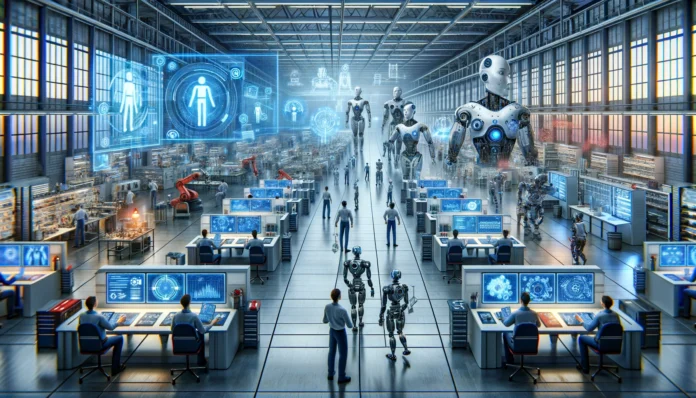In today’s fast-paced world, the integration of human intelligence with robotic capabilities has become a cornerstone of innovation across industries. From manufacturing floors to healthcare facilities, the concept of human-robot teams is reshaping the way tasks are accomplished and productivity is achieved. In this article, we delve into the notion of “Synergy Redefined: Human-Robot Teams for Productivity Excellence,” exploring how this collaborative approach is revolutionizing the workplace and driving efficiency to new heights.
The traditional view of robots as standalone entities working in isolation is rapidly evolving. Instead, there is a growing recognition of the immense potential that arises when humans and robots collaborate seamlessly as a team. This synergy redefines productivity by leveraging the unique strengths of both parties, resulting in enhanced performance, greater precision, and accelerated innovation.
One of the key advantages of human-robot teams is their ability to combine the cognitive abilities of humans with the speed and precision of robots. While humans excel in tasks requiring creativity, critical thinking, and adaptability, robots are unparalleled in repetitive, physically demanding, and high-precision tasks. By harnessing the complementary strengths of each team member, organizations can optimize their operations and achieve unparalleled levels of productivity.
In manufacturing environments, human-robot teams are revolutionizing production processes by streamlining workflows and improving efficiency. Collaborative robots, or cobots, work alongside human operators to handle repetitive tasks such as assembly, packaging, and material handling. This not only frees up human workers to focus on more complex tasks but also minimizes the risk of injuries and fatigue associated with repetitive motions.
Moreover, human-robot teams enable greater flexibility and adaptability in responding to changing production demands. With advanced algorithms and machine learning capabilities, robots can quickly adapt to new tasks and environments, while human operators provide oversight and guidance where necessary. This agility allows organizations to optimize their production schedules, reduce downtime, and stay competitive in dynamic market conditions.
Beyond manufacturing, human-robot teams are also making significant strides in healthcare, where precision and efficiency are paramount. Surgical robots, for instance, assist surgeons in performing minimally invasive procedures with unparalleled accuracy and control. By working in tandem with skilled medical professionals, these robots enable faster recovery times, reduced complications, and improved patient outcomes.
In warehouses and logistics facilities, autonomous robots are revolutionizing inventory management and order fulfillment processes. These robots navigate complex environments, retrieve items, and transport them to designated locations with speed and precision. Human workers oversee these operations, leveraging their expertise to optimize workflows and address any unforeseen challenges that may arise.
However, the synergy between humans and robots extends beyond task execution to encompass collaborative problem-solving and decision-making. Through advanced algorithms and artificial intelligence, robots can analyze vast amounts of data and provide valuable insights to human operators. This empowers teams to make informed decisions, identify optimization opportunities, and drive continuous improvement across the organization.
As the adoption of human-robot teams continues to grow, it is essential to address potential challenges related to safety, trust, and ethical considerations. Organizations must prioritize robust safety protocols, ensure clear communication between humans and robots, and establish mechanisms for accountability and oversight. By fostering a culture of collaboration and mutual respect, companies can harness the full potential of human-robot teams while mitigating risks and ensuring a safe working environment for all stakeholders.
Thus, the concept of “Synergy Redefined: Human-Robot Teams for Productivity Excellence” represents a paradigm shift in how work is accomplished and value is created. By leveraging the complementary strengths of humans and robots, organizations can unlock new levels of productivity, efficiency, and innovation. As technology continues to evolve and new applications emerge, the potential for human-robot collaboration is limitless, offering exciting possibilities for the future of work across industries.





